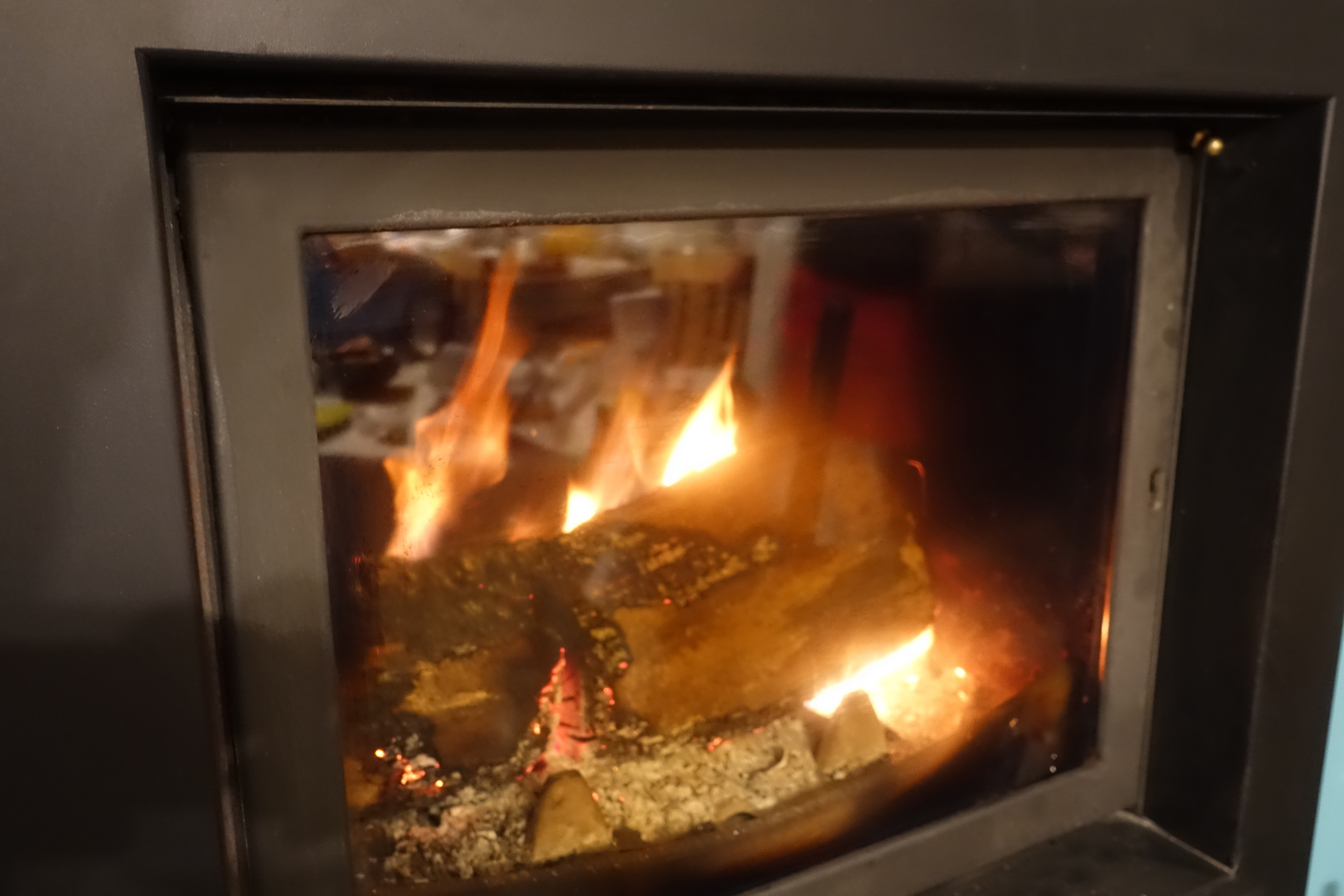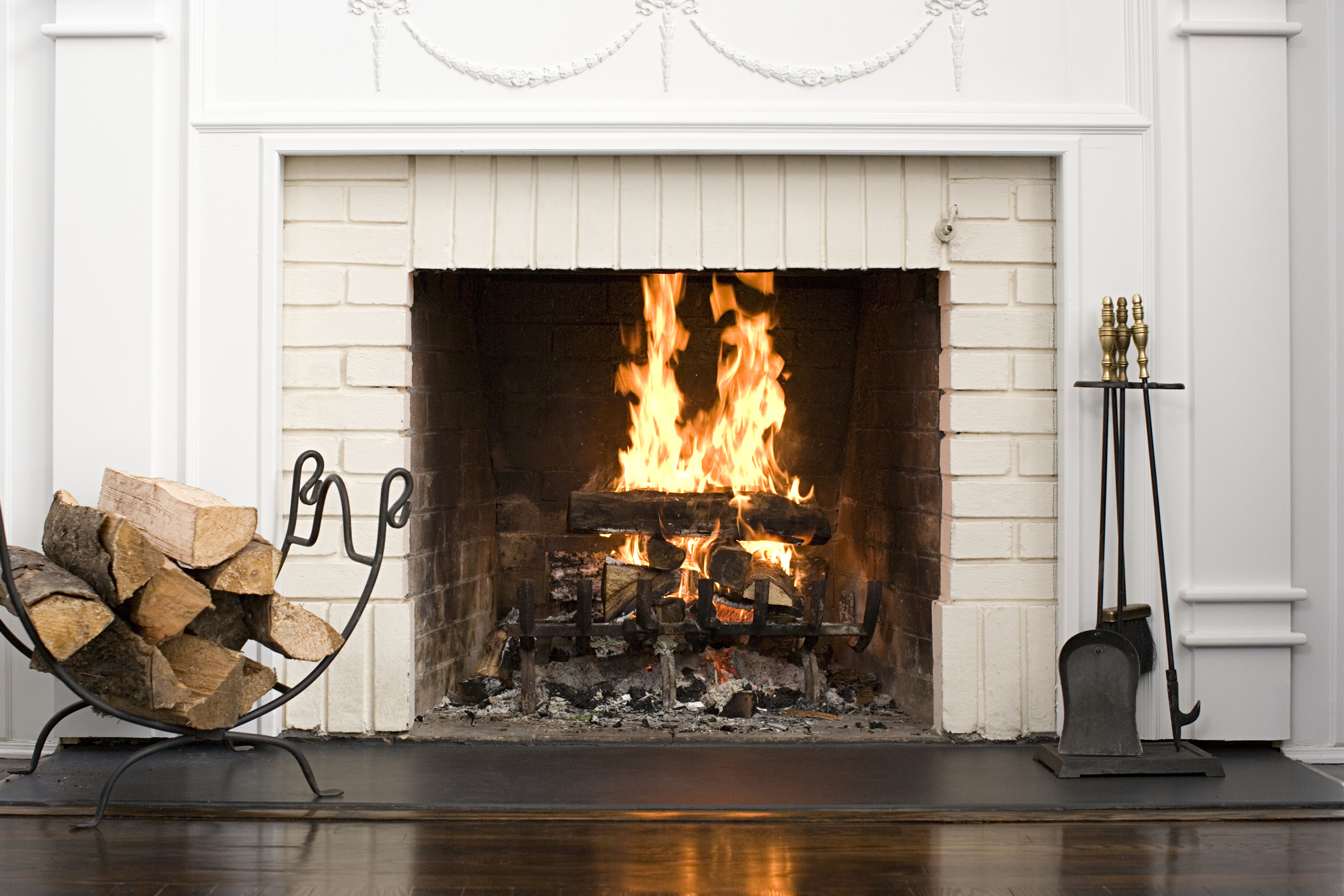Do you want chestnuts roasting on an open fire but not Jack Frost nipping at your nose? You can curl up with a book or a cup of hot chocolate with your significant others before a fire this holiday season, while making your fireplace safer and more efficient.
First, Check Local Fireplace Regulations
Let’s start with the basics. Before building a fire in your fireplace, check with your local codes regarding wood burning, especially if you live in a fire prone area in the west. Concerns about the health impacts of smoke and particulate matter from chimneys have led to restrictions on open fires. Particles less than 10 micrometers in diameter from burnt wood get lodged in our lungs, increasing the risk of asthma and other respiratory diseases, especially for children and older adults.
In some jurisdictions in California, for instance, open hearth wood-burning fireplaces are not allowed in homes built after 2016. In some areas most affected by smog and smoke from forest fires, open-hearth wood burning is forbidden on what they call “Spare the Air Days” in California.
In Colorado, counties in Denver and surrounding areas limit wood burning during an “air quality Action Day.” Exceptions include households where the primary heat source is wood and homes using EPA-certified wood-burning devices that limit particulate matter below a certain level.
A government-sponsored website, AirNow, will show you the air quality in your area. Several apps, including AirNow, are available for iPhones and Android devices that track the weather, including air quality, on your phone.
Ready for a Fireplace Upgrade?
The design of your fireplace can have a big impact on its safety and efficiency. Here are some options for improving the performance of fireplaces, from the most basic to the most sophisticated. (The EPA has an excellent overview of fireplace types.)
This article is focused on fireplaces and not home heating devices, such as pellet stoves or what are sometimes called “Swedish Fireplaces.” Swedish, or masonry, fireplaces are built with material that holds heat and radiates it to its surroundings over time. The exhaust gasses pass through a maze of channels before being exhausted, and the heat is absorbed into the masonry, making them very efficient heaters, but they require a significant construction project.
Chimney Balloons Can Stop Cold Air
Typical old-fashioned fireplaces leak a lot of energy and create drafts all year, especially in the winter when there is a significant temperature difference between inside and outside the home. One big reason is that most dampers are metal and are rarely air-tight even when they’re closed.
A chimney balloon is an inflatable device that fits just below the damper in your fireplace and blocks airflow. Don’t use a chimney balloon when you have a fire burning! But after the smoking embers turn to ashes, it’s a great way to save energy and be more comfortable.
Research in the UK—where they know chimneys, chim chim cheree—shows that chimney balloons can decrease airflow through the chimney by more than 80%, which means they save energy by eliminating cold downdrafts or warm air escaping up the chimney. Chimney balloons are a little klugy to install but are worth the effort.
Consider Gas and Electric Fireplaces
Electric fireplaces can be relatively airtight and need no chimney while generating a lot of radiant heat. Their biggest downside is aesthetic since it’s hard to make an electric fire look like a real fire.
Gas fireplaces do need a chimney or some exhaust pipe. To create a cheery fire, you can use gas to start a wood fire and then turn the gas off. Gas fireplaces give off a lot of heat but burning gas produces CO2, CO, and other nasty gasses like NO. Be sure that gas fireplaces are well-vented to the outside so gasses don’t escape into your home.
Burn More Cleanly with Fireplace Retrofits and Inserts
If you love the look and spontaneity of a wood fire, fireplace retrofits to your existing wood-burning fireplaces can make them more efficient and less polluting. Retrofits typically fit inside your existing fireplace and use materials that increase the fireplace’s temperature so the wood burns more efficiently and cleanly. Some devices claim to reduce emissions by 70% or more.
Fireplace inserts are more efficient and less polluting than fireplace retrofits. Inserts fit into a traditional masonry or metal firebox and operate like a free-standing wood stove that can be used efficiently and safely. They need to be sized correctly to fit the existing space. There are wood, gas, and electric fireplace inserts.
Inserts can control the air intake and, therefore, the burn rate of the wood, making it more efficient. Some fireplace inserts come with fans or blowers that help take the heat around the firebox and distribute it to the room.

Step up to EPA Standards
The EPA does not certify or regulate fireplaces and fireplace retrofits but it does “qualify” them through a Voluntary Fireplace Program. EPA recommends that you check your state or local government and clean air organizations to determine what is legal in your area before embarking on a retrofit project.
The EPA does certify wood-burning fireplace inserts through its EPA Certified Wood Heater Database. Certified wood-burning appliances emit particulate matter below a certain level, about 4 to 8 grams per hour, depending on the type of device.
The agency has lots of good tips for burning wood, including storing wood and disposing of the ashes. Check out its Burn Wise online resource. Everything you want to know about burning wood, or roasting chestnuts, cleanly and efficiently.
With a little effort, you can enjoy cozy time by the fireplace this winter while minimizing wasted energy and keeping your family, neighbors and the air we breathe healthy.
